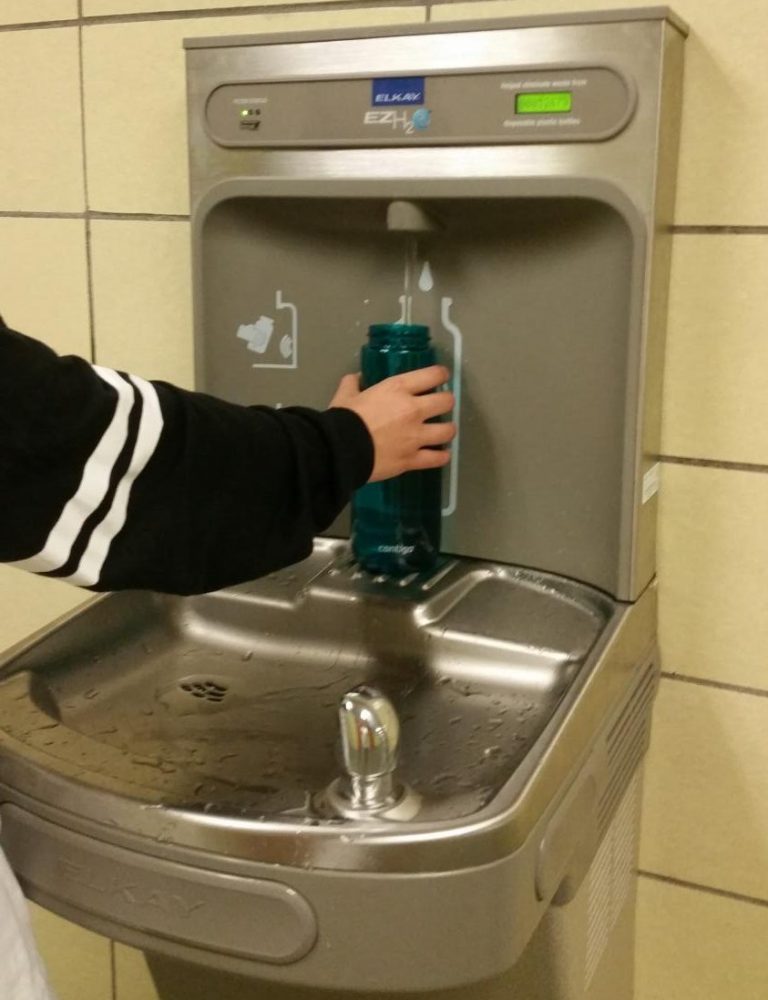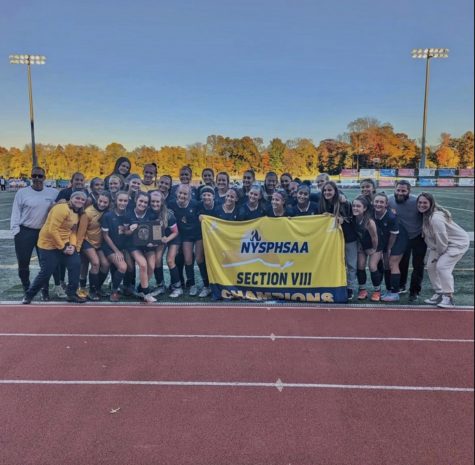Long Island school lead levels in water leading to concern
Hydrating cleanly: MHS installs new safe water fountains
The consequences of time and old pipes and fixtures containing lead have caught up to many school districts across Long Island, including Massapequa.
Many of the service pipes found in the older schools on Long Island are made of components which often contain lead, thus risking the possibility of corroding and seeping lead into the water supply of schools from which students and staff may drink.
This scenario comes in the wake of the infamous Flint, Michigan lead water crisis. As a new pipeline was being built, residents drank unknowingly from an alternative lead-laden river source for at least 18 months, exposing nearly 9,000 children younger than 6 to critically high levels of lead. This resulted in difficulties in both mental and physical development of the children in Flint, Michigan in what some call one of the great American tragedies of this century.
The crisis and government handling of the situation in Flint sparked massive outrage. As a result, many are now concerned of a possible domino effect throughout the country as buildings and pipe systems continue to age.
The concern of lead in New York schools was high enough for Governor Andrew Cuomo to issue emergency regulations resulting in a signed bill requiring school districts to test drinking water for lead by October 31, 2016. This new law Lead Testing in School Drinking Water mandates the testing for lead in school drinking water including fountains and kitchens.
In addition, the results must be reported to parents, the state, and local governments. The purpose of the law is to protect both students and employees in schools from toxic lead possibly present in old plumbing.
Following the new law, a Newsday/News 12 survey reported that approximately 20 percent of the Long Island school districts tested in 2016 had elevated levels of lead present in drinking water that caused them to shut down fountains and replace fixtures.
In Massapequa, testing occurred both prior to and after the law went into effect.
“Back in June 2016 we tested for lead in drinking water, and the outcome was that there was some above old law standards and above the new law standards,” Director of Facilities and Operations Timothy O’Donnell said. “There was lead found in a couple of outlets that were more private and used less often.”
According to Mr. O’Donnell, outlets containing excess levels of lead include an unpopular drinking fountain at Lockhart, a sink in the midst of renovation at Berner, and a drinking fountain at the high school. In an immediate response to the findings, the district was proactive in shutting down the sources and replacing them with the refillable filtered water bottle stations.
In an August 2016 letter addressed to the parents and the community of Massapequa from superintendent Lucille F. Iconis, she stated “I am pleased to report that the vast majority of our drinking fountains were found to be in compliance with EPA guidelines.”
Prior to discovering the results there were already plans for the district to place refillable filtered water stations in schools in an effort to reduce the usage of disposable plastic water bottles. “These refillable bottle stations have seen great success,” Mr. O’Donnell said. “They started in gyms and cafeterias, but eventually we would like to have one on every floor of every building.”
The Elkay filtered water bottle stations installed across the district meet the lead reduction requirements for the NSF/ANSI 53 certification and eliminate excess lead in drinking water, making it safer to drink for students.
According to the United States Environmental Protection Agency (EPA) in a letter that was shared with school districts, there is no safe level of lead exposure for children who “can have health effects when exposed to even the lowest levels of lead”.
Aside from the filtered water fountains, the district will continue with ongoing testing to ensure that students are not being exposed to any harmful levels of lead. Residents of Massapequa should be aware that the district is addressing the situation and according to the letter from the superintendent, taking immediate action to make changes and comply with EPA guidelines.
Positive lead results in the drinking sources at schools does not necessarily mean that high lead levels are in the public water supply. Often times metals can get into the school water by leaching from older pipes or other fittings in the fixtures.
Aside from drinking tainted water, other methods in which people can be exposed to lead include inhalation and ingestion of dust containing the metal.
Side effects of lead are serious and, according to the EPA, children are more susceptible to the harmful effects of lead than adults due to their developing brains. Such effects in children include learning disabilities, hyperactivity, reduced attention, behavioral problems, slowed growth, hearing problems, anemia, and lower IQ.
Information about the lead and results of the testing done in the Massapequa schools can be accessed on the school website under the “Public Documents” subcategory. According to the district website, the information was shared and will be continued to be shared to reassure parents that the health and safety of the students is a high priority.










